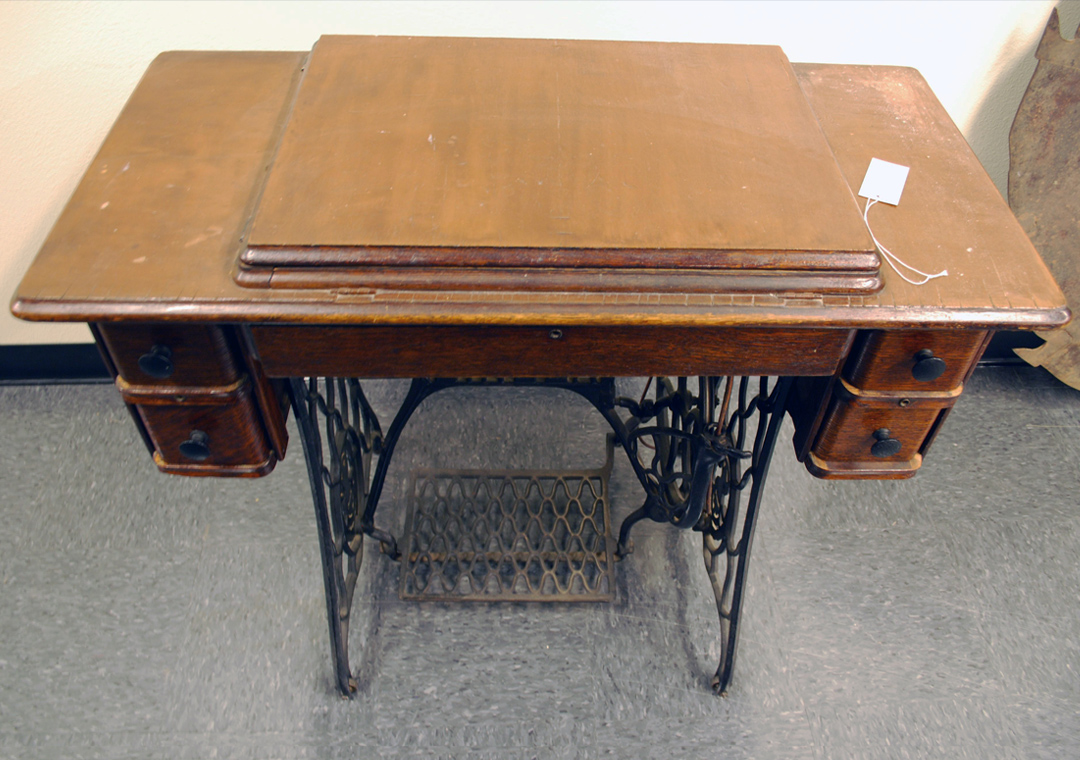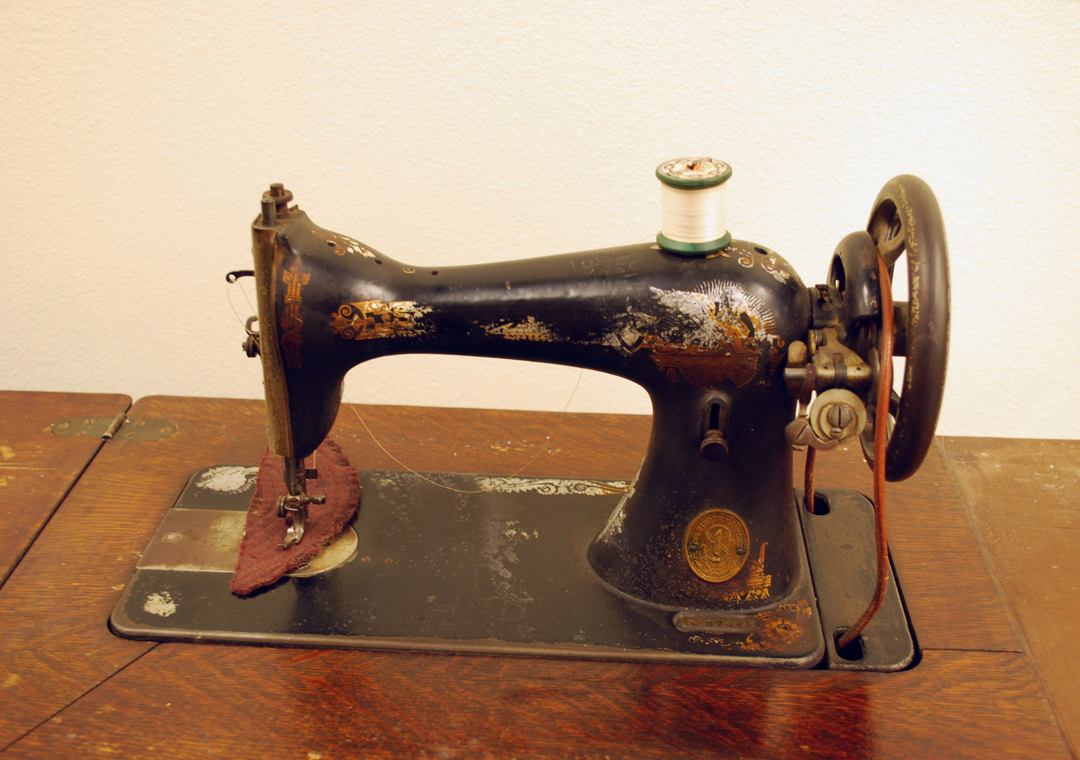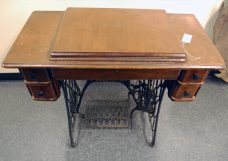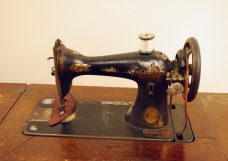This is a Singer treadle style sewing machine, mounted in a wooden table. In order to use this type of sewing machine the operator uses his or her foot to press repeatedly on the treadle, or large foot pedal, at the bottom of the machine. This turns a flywheel that is connected by a leather belt to the wheel that controls the the sewing needle. The speed at which the treadle is pressed controls the speed of the needle.
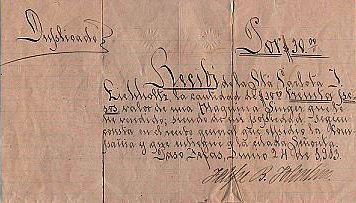 At the right is an image of the handwritten receipt from when this machine was purchased in El Paso, Texas by Mrs. Carlotta Outton from Felipe Tolentino. The serial number indicates that the machine was made in 1909. The model number is 15-30-2, with a notation that the cabinet is made of oak. The “2” indicates cabinet style 2, which is a plain cabinet with treadle and 5 drawers.
At the right is an image of the handwritten receipt from when this machine was purchased in El Paso, Texas by Mrs. Carlotta Outton from Felipe Tolentino. The serial number indicates that the machine was made in 1909. The model number is 15-30-2, with a notation that the cabinet is made of oak. The “2” indicates cabinet style 2, which is a plain cabinet with treadle and 5 drawers.
The drawers of this cabinet were likely used to hold sewing notions and various attachments for the machine, such as presser feet. A presser foot is the flat metal device at the end of the shaft that holds the sewing needle. A presser foot is lowered with a lever to apply pressure to the fabric being sewn so that the pieces move smoothly together. The different feet work to allow the needle to move in different ways. One might have a number of different types of presser feet for different sewing tasks. Common types of presser feet include the button sewing, and embroidery feet.
Exactly who first developed the idea for a sewing machine is unknown. The earliest series of patents related to the concept of machines for sewing didn’t even produce working machines. One of the earliest machines that did work was made in Vermont and could stitch, but only for short distances. In 1830, a Frenchman by the name of Barthelemy Themonnier created an embroidery machine and made military uniforms, to the dismay of French tailors, who attacked him twice and drove him out of business. Several attempts across the United States and Europe also met with limited success. They could only sew a short length and straight stitches only. Singer and Howe later emerged as important names in the patent wars over early sewing machines in the mid-nineteenth century. The Singer Sewing Company, by Isaac Singer, has been synonymous with the sewing machine for more than 100 years and manufactured the machine at the UTSA Institute of Texan Cultures. The first Singer was produced in 1851, in a New York City factory, where the machines were made individually by hand.
The popularity of the treadle foot style machines lasted because of the difficulty in rolling out electricity to more remote locations. Even when electric power was established in a city the outlaying rural regions were slower to get service. Machines that were foot-powered like this would have been an invaluable time-saving tool for the home. These machines also came in handy during World War II, when there was a strong push to conserve electricity, as people worked to sew needed items for the war effort.
The treadle foot sewing machines are making a comeback these days, as their popularity increases with those who are environmentally conscious and wishing to reduce their carbon footprint, or with those who are concerned with being prepared in case of a major disruption of utilities and services.
